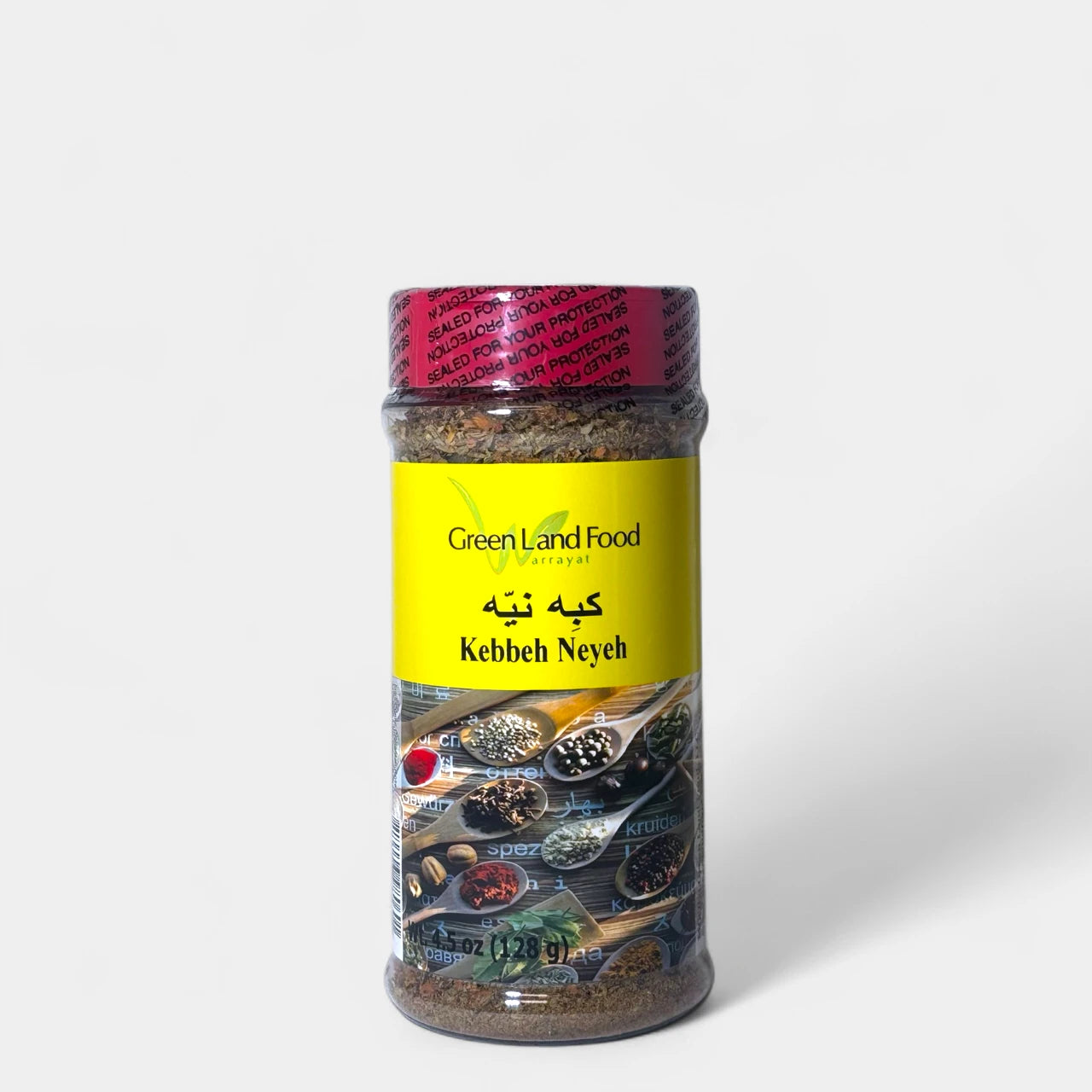Green Land Food, LLC
Kebbeh Neyeh
Kebbeh Neyeh
Couldn't load pickup availability
Product Description: Kebbeh Neyeh Spice - 6 oz
Experience the rich, authentic flavors of Lebanese cuisine with our Kebbeh Neyeh Spice - 6 oz. Specially crafted for Kebbeh Neyeh, the traditional Lebanese raw meat dish, this spice blend brings together warm, aromatic, and slightly earthy flavors that enhance the natural taste of fresh minced meat.
This expertly balanced blend is designed to create the perfect Kebbeh Neyeh, giving it a savory, slightly spiced taste while maintaining its authentic texture. It can also be used for cooked Kebbeh variations, grilled meats, and Lebanese-style marinades.
Key Features of Kebbeh Neyeh Spice
Authentic Lebanese spice blend for traditional Kebbeh Neyeh
Balanced mix of warm, aromatic, and earthy flavors
Perfect for raw and cooked Kebbeh, grilled meats, and marinades
Finely ground for even seasoning and easy blending
Convenient 6 oz jar to preserve freshness
Ingredients
Allspice, Cinnamon, Cumin, Black Pepper, Coriander, Nutmeg, and Other Traditional Spices.
Serving Suggestions
Mix into finely minced raw beef or lamb for traditional Kebbeh Neyeh
Use in classic cooked Kebbeh for rich, authentic flavor
Add to grilled meats like lamb skewers and kofta for Lebanese seasoning
Blend into meat marinades for extra depth and warmth
Incorporate into vegetarian dishes for a unique spice profile
Why Choose Our Kebbeh Neyeh Spice?
Our Kebbeh Neyeh Spice - 6 oz is crafted from premium-quality, authentic Lebanese spices, ensuring a true and traditional flavor in every dish. Whether you're making classic raw Kebbeh Neyeh or experimenting with new recipes, this spice blend guarantees a bold, well-balanced taste. Bring home the flavors of Lebanon today!
Share


